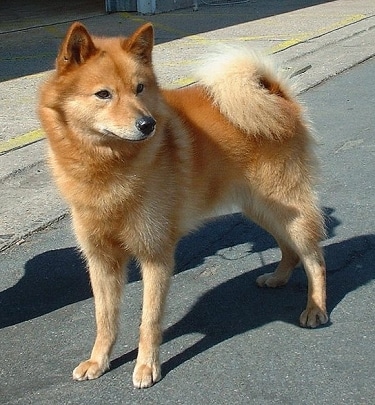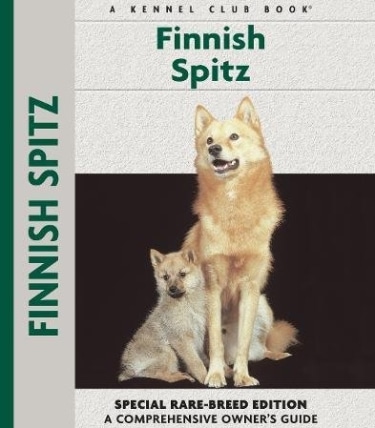
The origins of the Finnish Spitz breed can be traced back thousands of years ago. It is believed these dogs were developed in the region of the Volga River – which is now Finland. However, it has also been claimed these dogs are related to the Russian Laika which is a type of hunting dog of Northern Russia and Russian Siberia.
The Finnish Spitz was isolated from other dogs in their northern region which kept the breed pure. However, in the 1800s various tribes came to the area and interbred their dogs with Finnish Spitz nearly causing the extinction of the breed. The Finnish Spitz was saved by two sportsmen from Helsinki who found a few dogs still pure. These sportsmen who were impressed by the Finnish Spitz are credited for salvaging the breed.
The Finnish Kennel Club recognized the Finnish Spitz in 1892. The breed arrived in the United States in 1959 and in 1975 the Finnish Spitz Club of America was founded. Finnish Spitz competed in the Miscellaneous Classes since 1983, but they were then eligible to compete in the Non-Sporting Group in 1988. The Finnish Spitz is the American Kennel Club’s 130th breed.
Height: Males – 16 to 19 inches (44-50 cm) Females – 14½ to 17 inches (39-45 cm)
Weight: Males – 27-33 lb (11-13 kg) Females – 20-27 lb (8-9 kg)
Coat Type: The Finnish Spitz has a double coat. The inner coat is soft, short and dense and the outer has long, straight, harshly textured guard hairs. Males have a slightly longer and coarser coat than females and also more have more profuse hair at the shoulders. The coat should be brushed weekly and only bathed when necessary. The Finnish Spitz is a natural ‘wash and wear’ dog and trimming is not needed except for under the pads of the feet. Seasonal heavy shedder.
Color: The color of the Finnish Spitz coat can be shades of red-gold from pale honey to dark auburn; may have a white patch on chest.
Temperament: Finnish Spitz are active, friendly, loyal and very intelligent. These dogs interact very well with people including children and make a wonderful family pet. Finnish Spitz can play for hours and are generally good with other pets. It is important to socialize these dogs early so they are not aloof with strangers or reserved. In addition, it is important the owner establishes he is dominant and boss. Training should be firm, but with a gentle voice and owners must be patient. Finnish Spitz respond better to praise than correction. Finish Spitz love to hunt and will chase small animals. These dogs are also known to bark a lot which makes them a good watch dogs. The Finnish Spitz breed is independent and can be stubborn.
Health Problems: Finnish Spitz are generally healthy. Some health concerns include: hip dysplasia, elbow dysplasia, patellar luxation and epilepsy. This breed loves to eat and can easily become overweight which can then lead to health problems. A properly cared for Finnish Spitz can live up to 13 – 15 years.
Special Interest:
• The Finnish Spitz has been the national dog of Finland since 1979.
• Finnish Spitz were called the “Finnish Barking Birddog” of Finland.
• The Finnish Spitz has also gone by the name ‘Suomenpystykorva’ – which means “Finnish cock-eared dog. It has also been referred to as ‘Finkie’ where it was nicknamed after its arrival in England in the 1920s.
Classifications:
AKC: Non-sporting Group
ANKC:Group 4 Hounds
CKC: Group 2 – Hounds
FCI: Group 8 – Section 2 – Flushing Dogs
KC: Hound
NZKC: Hounds
UKC: Northern Breed
 Kennel.com – Complete Guide to Dogs The Dog Lovers Guide
Kennel.com – Complete Guide to Dogs The Dog Lovers Guide
 Finnish Spitz – Rare-Breed Edition
Finnish Spitz – Rare-Breed Edition